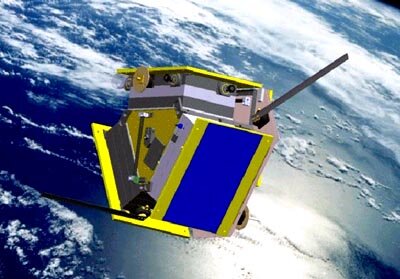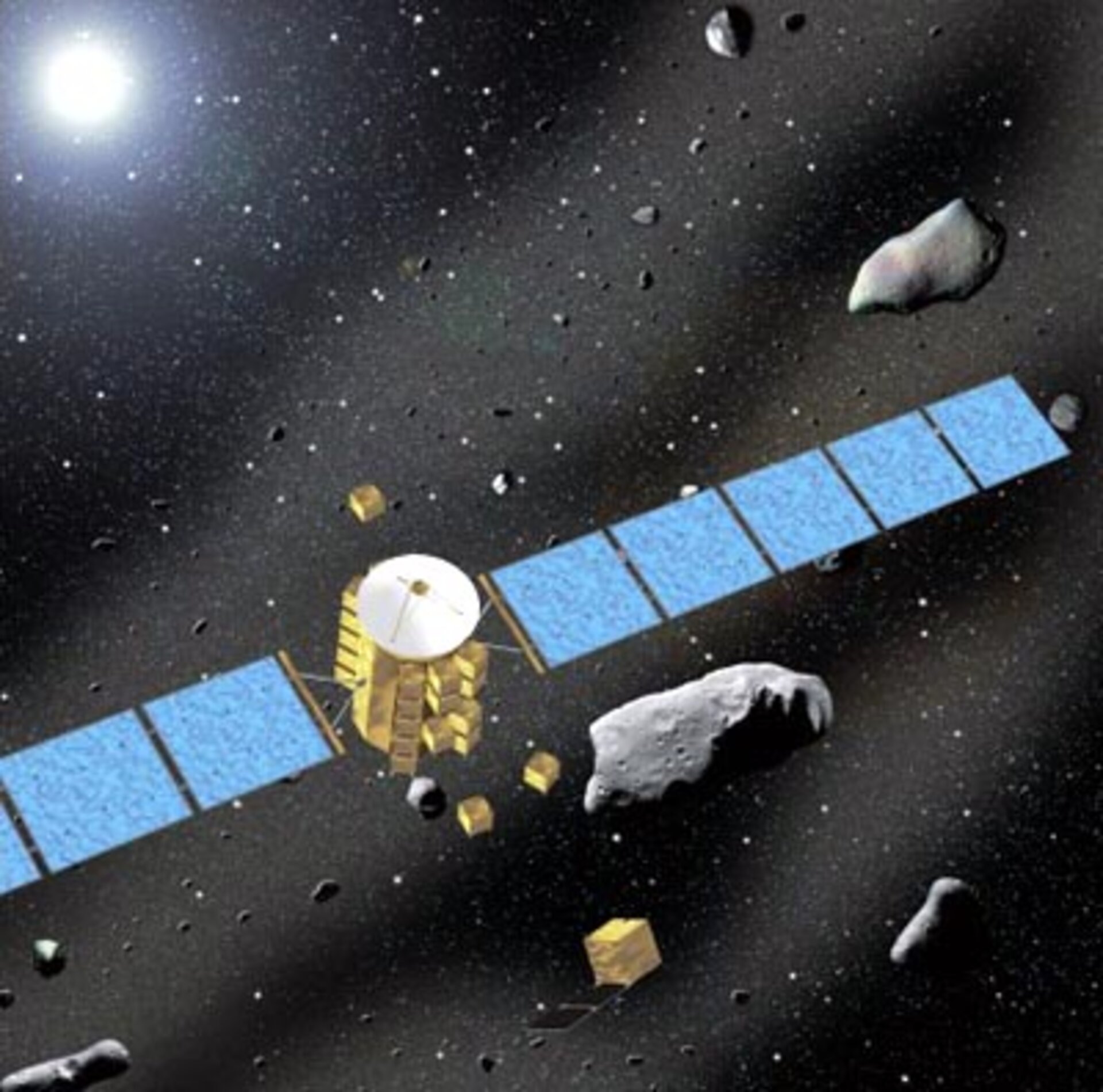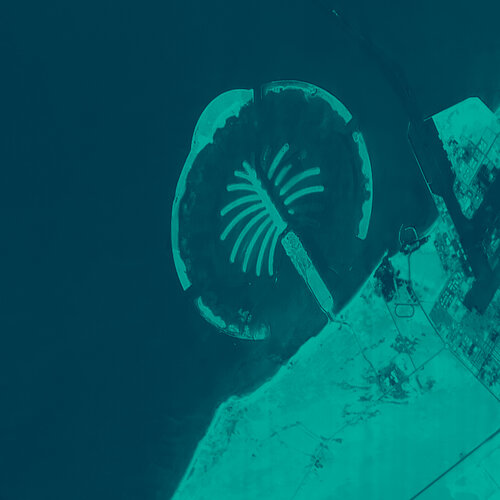ESA Considers Spacecraft Swarm to Asteroids
ESA could launch a spacecraft swarm to investigate a hundred Main Belt asteroids, according to a Feasibility Study recently completed by the Agency’s General Studies Programme.
Another Study investigates the possibility of space-borne demonstration of formation flying technologies to take place in 2006.
The Asteroid Population Investigation and Exploration Swarm (APIES) is a mission concept intended for the study of a large number of asteroids in the Main Belt. It aims to understand the similarities and differences between the wide varieties of these planetary leftovers, found between the orbits of Mars and Jupiter.
Asteroids are important to understand, as they are believed to represent the remnants of a planet that failed to form in our Solar System. Earth-based telescopic studies show a bewildering variety of these objects. APIES would fly by one hundred of them during a six-year operational phase, providing vital data on each asteroid’s size, mass, density and surface properties.
The baseline mission concept is based on the release of a swarm of 19 BElt Explorers (BEE) spacecraft from a single mothership, called the Hub and Interplanetary VEhicle (HIVE).
At launch the BEEs would be attached to the HIVE. Once in the Main Asteroid Belt, over two and a half times further from the Sun than the Earth, the tiny 45 kg BEEs would detach and form a circular swarm, 45 million kilometres across, around the HIVE.
They would behave like an enormous butterfly net, with an asteroid passing through the swarm every few weeks. As one drew close, the nearest BEE would position itself to fly by at just 20 km distance, taking scientific measurements. The collected data would then be relayed back to Earth through the HIVE.
"The most challenging aspect of this mission is the high level of autonomy required for the control and management of the whole swarm. The BEEs are envisaged to be ‘left alone’ for weeks and look after their positions themselves. In addition, they are intended to autonomously perform the manoeuvres required by fly-bys and observations" say Frederic Teston and Stefano Santandrea, who oversaw this Feasibility Study for ESA.
The APIES concept (not yet having any launch date) envisages the use of a loose swarm of satellites. Other scientific missions currently under more detailed study at ESA are instead based on the utilisation of more than one spacecraft flying at very precise distances and attitudes from each other.
This new breed of formation fliers will need to know exactly where the others are and to adjust their own position and pointing accordingly, to remain in the very tight formation required for the fulfilment of their scientific objectives.

To make a preliminary test of a limited subset of the technologies required by formation flying, another recently completed Feasibility Study proposes to fly a 15 kg nanosatellite alongside the Proba 2 spacecraft, currently under development at ESA. If approved, the nanosat, called Proba 2 ¼, would be launched alongside Proba 2 in 2006 and, once in Low Earth Orbit, manoeuvre in coordination with Proba 2.
Both Feasibility Studies reports have been passed on to the relevant authorities within the Agency for further consideration.





